Table of Content
Raise your hands if you've been eagerly anticipating Diwali just as much as we have! With the joyous occasion right around the corner, it's time to prepare by getting Diyas, fireworks, and simple Rangoli designs for your home in order. Many households follow the tradition of adorning their house's entrance with uncomplicated Rangoli layouts during Diwali.
This vibrant custom originally originated to commemorate the triumph of good over evil. It is also associated with Goddess Lakshmi, who can bless you with prosperity. According to Indian beliefs, a well-decorated entryway adorned with colorful Rangolis is an auspicious symbol for good luck and success. So, this Diwali, let your creativity flow by drawing inspiration from these basic Rangoli designs for your home!
Relevance of Rangoli for Diwali:
In accordance with Hindu Dharma, creating Rangoli designs on significant occasions holds great significance. Particularly, during Diwali, which commemorates Lord Rama's victorious return after the battle against Ravana, these patterns symbolize hope and joy. In various regions of India, these artistic expressions are known by different names such as "Kolam," "Muggulu," "Kolangal," "Alpana," and more. Simple rangoli designs for home on Diwali predominantly emphasize a harmonious selection of colors and patterns to invoke the festive spirit.
1. Easy Diya (Deepam) Rangoli Layout-- Happy Diwali:

This simple rangoli design, perfect for Diwali, features a Diya as its central element. Commence by outlining the Diya and then proceed to create the flowers and leaves surrounding it. Fill in the colors in an opposite manner, accentuating the pink, green, and yellow hues for an eye-catching effect. Once the pink center is filled, use yellow to inscribe "Happy Diwali" for a contrasting touch. This particular rangoli pattern has gained recent popularity and requires minimal freehand drawing skills. It relies on placing large dots initially and then guiding the chalk powder in a specific direction with your fingertips to create the design. Begin with the Diya and mark the dots with color according to the flowers' count and arrangement. Use your fingertips to spread the color outward for the flowers. The leaf pattern can be crafted using a stick. This upcoming Diwali, impress your guests with this uncomplicated yet vibrant rangoli design for home.
2. Stunning Rangoli (Muggu) with Diya's:
.webp)
This uncomplicated yet elegant rangoli design is ideal for beginners. It features a simple flower at the center surrounded by circular flowers and mango motifs. The design's highlight is the striking contrast between the colors employed. The shading in the outer leaves and the checkered floral pattern add a sophisticated touch to the rangoli layout. It's suitable for any festival and can be customized accordingly. For example, adorn it with diyas and flowers for Sankranthi or during Diwali. This design may appear intricate, but once you grasp the technique, you'll enjoy the compliments it brings your way. It's a beautiful and simple rangoli design for home that exudes an air of confidence.
Also Read: Brighten Your Diwali: 11 Remarkable Lighting Ideas for 2023
3. Colourful Rangoli Layout For Beginners:
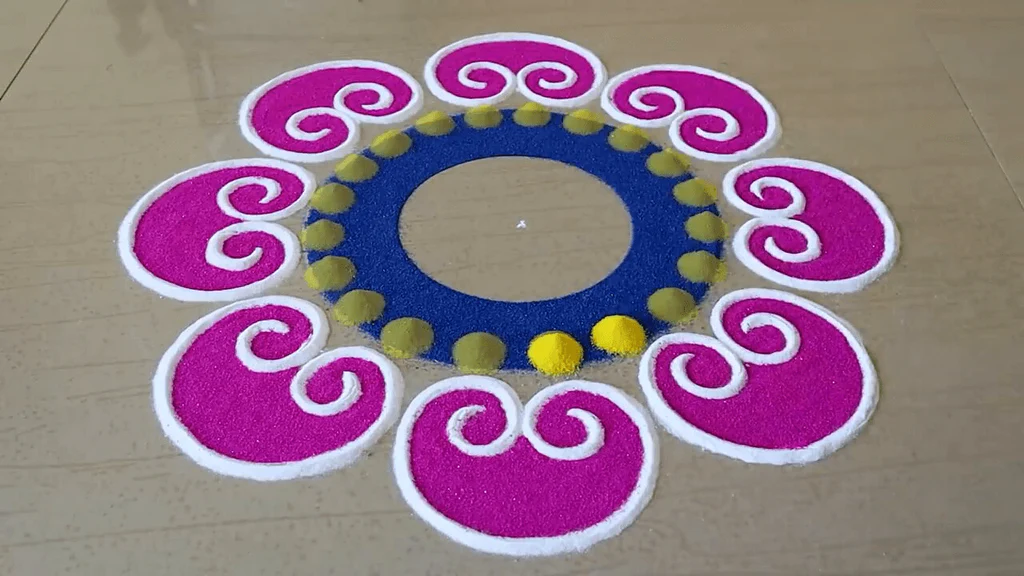
This simple rangoli design showcases two interlocking floral patterns with mango motifs, dots, and lines. To begin, outline the mango motifs and the floral pattern, and then proceed to color them from the inside out. The highlight of this rangoli is the shading of the flowers. Next, add depth to the center of the mango motifs with black lines and position the pink dots around them. Complete the design by shading it with chalk powder as needed. It can be created for any celebration or casually right at your doorstep, making it an ideal simple rangoli design for home.
4. Eye-catching Floral Rangoli Style:

This vibrant and lively rangoli design focuses on flowers prominently. Begin with a simple flower at the center and then sketch out representations of the flowers on five sides to ensure proper symmetry. Proceed to fill the intervening spaces between the flowers with a checkered pattern. Commence coloring from the center outwards. This design stands out remarkably due to the array of contrasting colors used in the flowers and the distinct patterns incorporated. It's suitable for any auspicious occasion such as family ceremonies or weddings. The next time you have a family gathering at your home, amaze everyone by creating this rangoli at your front entrance—it's a perfect simple rangoli design for home that exudes charm and liveliness.
5. 4 Square Diya Rangoli:

This is a straightforward yet delightful traditional artwork, featuring a vibrant and colorful flower design set against a checkered four-square base. The alternating arrangement of colors symbolizes the balance of yin and yang in life. Balance plays a significant role in this elegant design. The background hues are beautifully contrasted with orange and red shades for the Diya and floral patterns. It's a simple rangoli design for home that exudes traditional charm and harmony.
6. The Eight Mango Kolam:
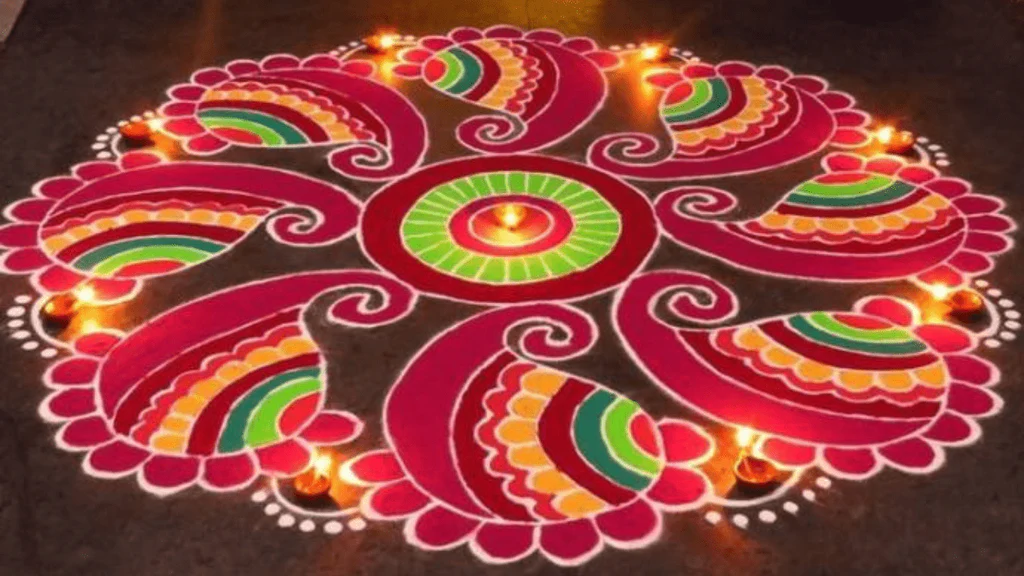
This is a hand-drawn Rangoli design that incorporates traditional mango motifs. It begins with a central circle, surrounded by eight mango patterns, symbolizing the Eight Lakshmis or the AshtaLakshmi from Hindu mythology. The use of colors and intricate detailing within this design elevates this simple pattern to a higher level of beauty. Diyas are also strategically placed to enhance the brightness and overall appearance, making it a wonderful simple rangoli design for home.
7. The Mandala Rangoli:
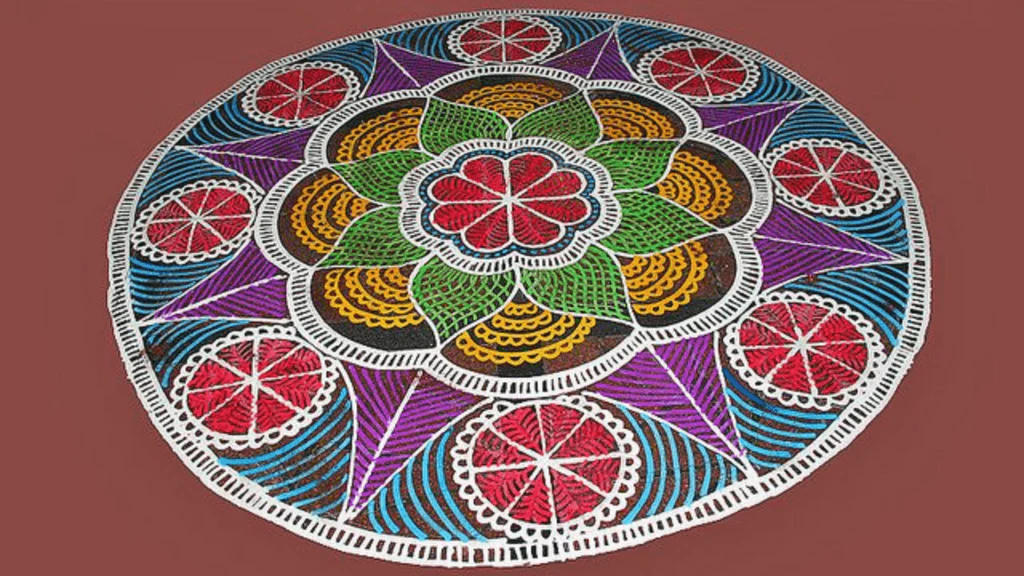
If you have an affinity for Mandala art, this design is a must-experiment with! This uncomplicated yet exquisite layout can be crafted using chalk powder. Initially, the center is formed with circles placed at equidistant intervals from each other. Each circle is adorned with diverse geometric patterns, as depicted. Encircling them is a sizable ten-petaled flower. A mesh-like pattern is drawn inside each flower using white color. To complete the visual effect, lamps are positioned along the edges. It's a simple rangoli design for home that incorporates the beauty of Mandala art.
8. The Rainbow Rangoli Designs for Diwali:

This artwork is an ideal fusion of symmetry and a vibrant palette. It's also one of the most popular Diwali Muggulu designs, known for its simplicity. To begin, a central base circle is drawn, within which a series of colorful petals are sketched, interlocking with one another. This composition is supported by a sequence of circles in various hues. The unoccupied space is filled with white chalk powder, creating a three-dimensional effect by making the colored powders stand out. It's a simple rangoli design for home that beautifully blends symmetry and a vibrant burst of colors.
9. The Divine Flower Kolam:

The primary objective of a Rangoli is to channel your inner energy through graceful curves, lines, and vibrant colors. Presented below is a distinctive design tailored for your prayer area. It can be crafted through a freehand illustration, utilizing a series of symmetrical circles. The Mandara design art exudes a spiritual ambiance, achieved through the intricate patterns created within each circle. This pattern is beautifully concluded with vivid blossoms at the end, serving as a holder for your cherished lights. It's a simple rangoli design for home that embraces the essence of spiritual energy.
10. Sankar Bharati Layout for Diwali:
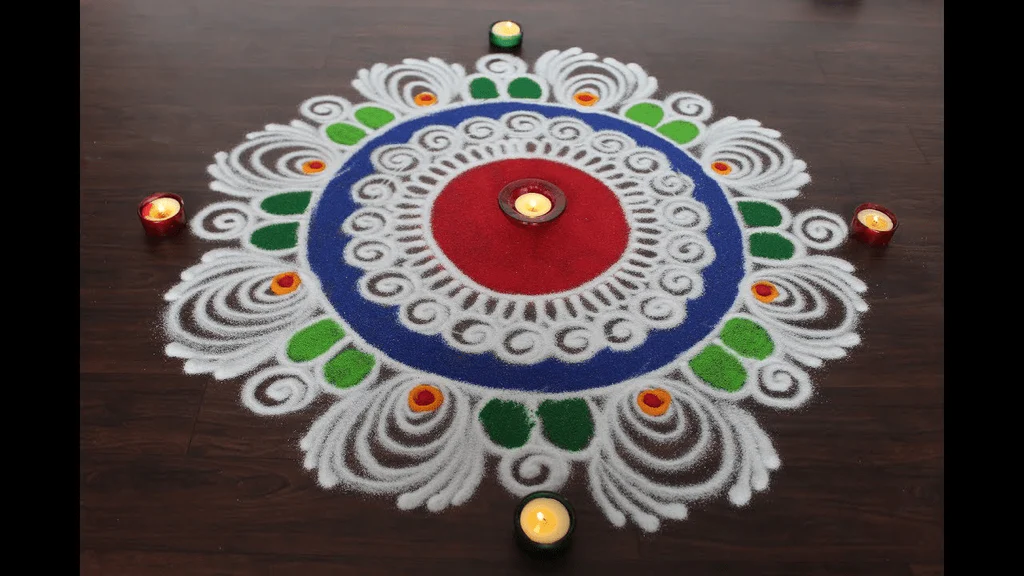
If you've ever been to the state of Maharashtra, you may have come across the art of Sanskar Bharati Rangoli. This unique technique involves using fingers, typically three or five from your hand, to craft intricate and artistic patterns. Initially, a basic outline is drawn on the ground, and colored powders are evenly sprinkled into it. By using fingers or even tools like pens, three-dimensional effects are meticulously crafted, as illustrated. Finally, white powder is employed to accentuate the central element, bringing it into focus. It's a simple rangoli design for home that showcases the artistry of Sanskar Bharati Rangoli.
Tips and Tricks for Diwali Rangoli Designs:
If you are sceptical regarding just how to proceed with your joyful Kolam, after that adhere to these very easy hacks:
- First, evaluate the location in which you prepare to make the Rangoli. Depending upon the size, you need to pick the ideal style.
- For exteriors, select a big pattern, ideally in round forms, for larger as well as better coverage.
- If you are not an expert with chalk powder, use a chalk item or a stencil to produce the outline. Load it with colours and utilize white powder to highlight the borders.
- You can also use smart tools like cones, moulds, CDs, bangles or other do-it-yourself stuff for sharp patterns. However, they benefit from smaller layouts just.
- Flower petals are a wonderful substitute for artificial, unsafe colours. So, if you are an environmentally aware individual, follow this idea.
- And remember constantly to begin your pattern inside out, instead of the contrary, as it can prevent stepping on your layout.
- Develop boundary styles like climbers, blossoms or simple lines to note the limits.
Overview:
Aren't these Diwali Rangoli designs absolutely stunning? This year, steer clear of the ordinary and make your celebration truly special by bringing these captivating patterns to life in your home. Feel free to experiment with different color palettes and shading techniques to create awe-inspiring effects. If you've crafted something particularly intriguing, do share it with us! Who knows, your creation might be featured in the coming year? It's all about adding a touch of creativity to your simple rangoli designs for home and making your Diwali celebration extraordinary.
Check out some beautiful rangoli design ideas in Carousel Image

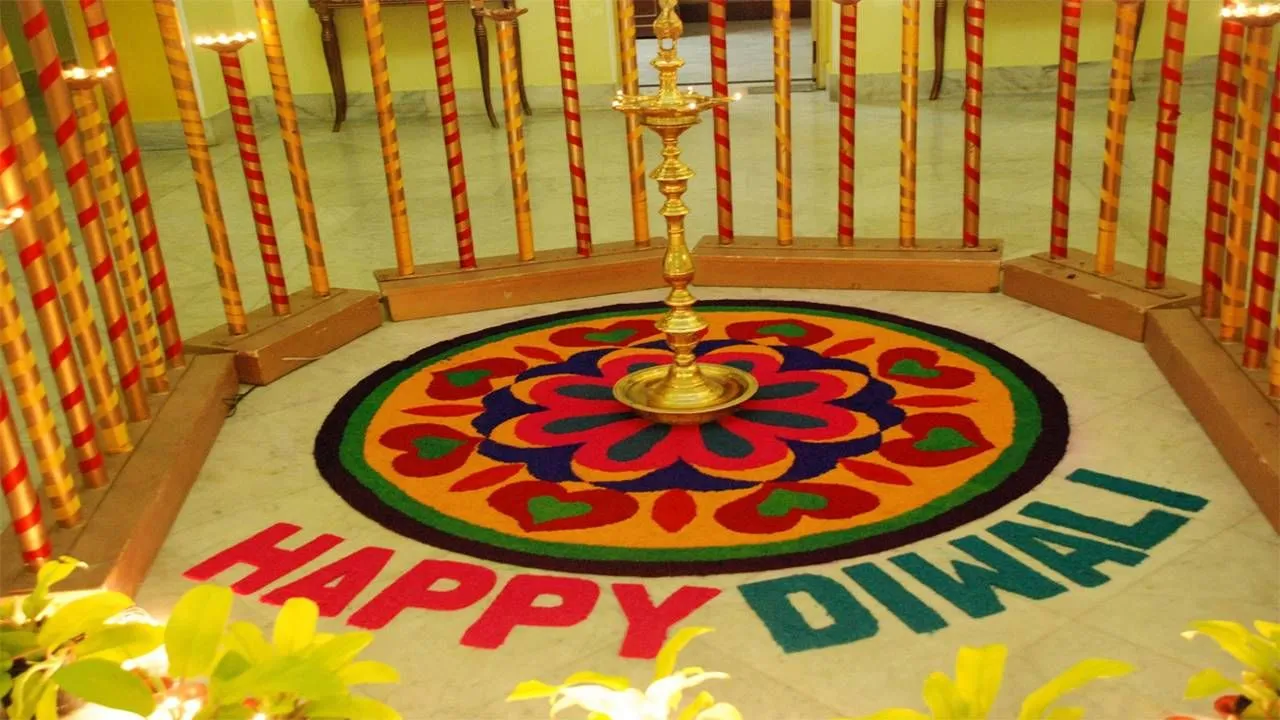
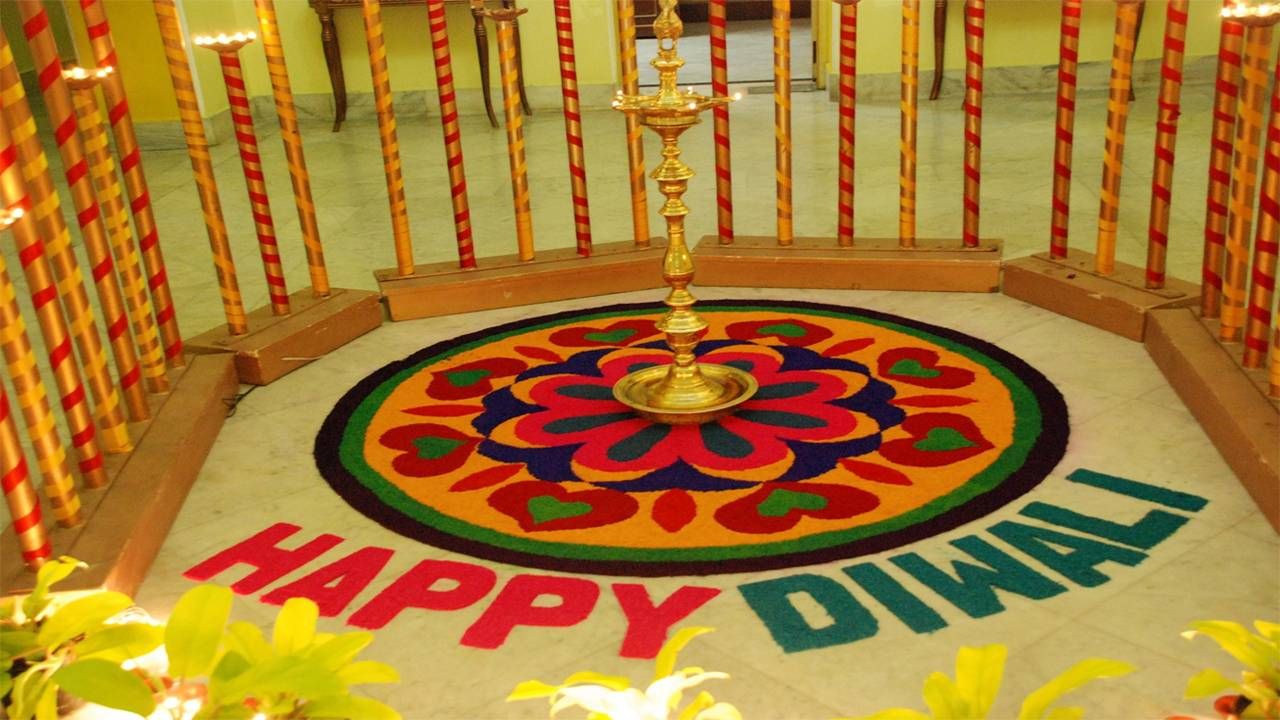
_1699512872.webp)

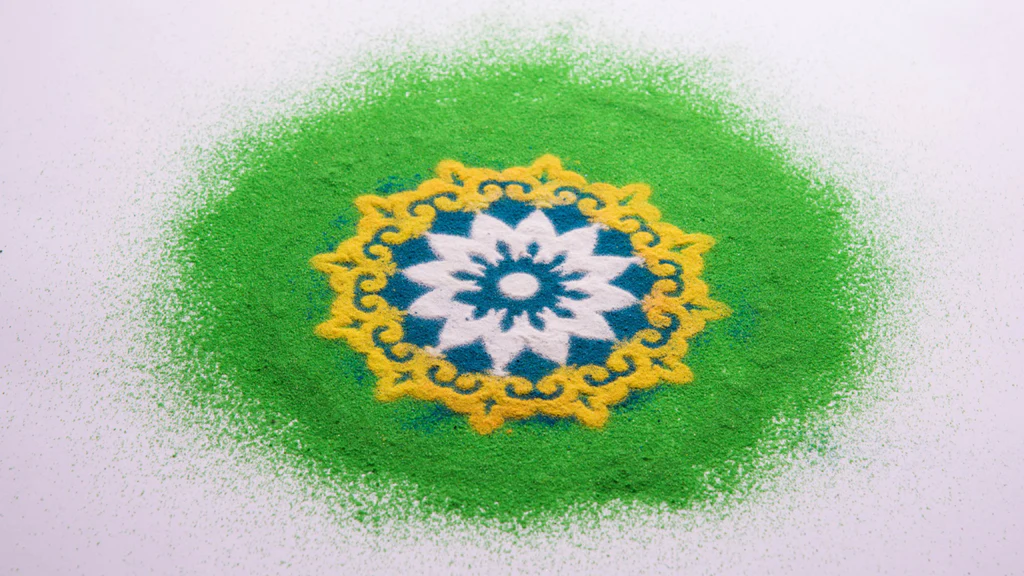
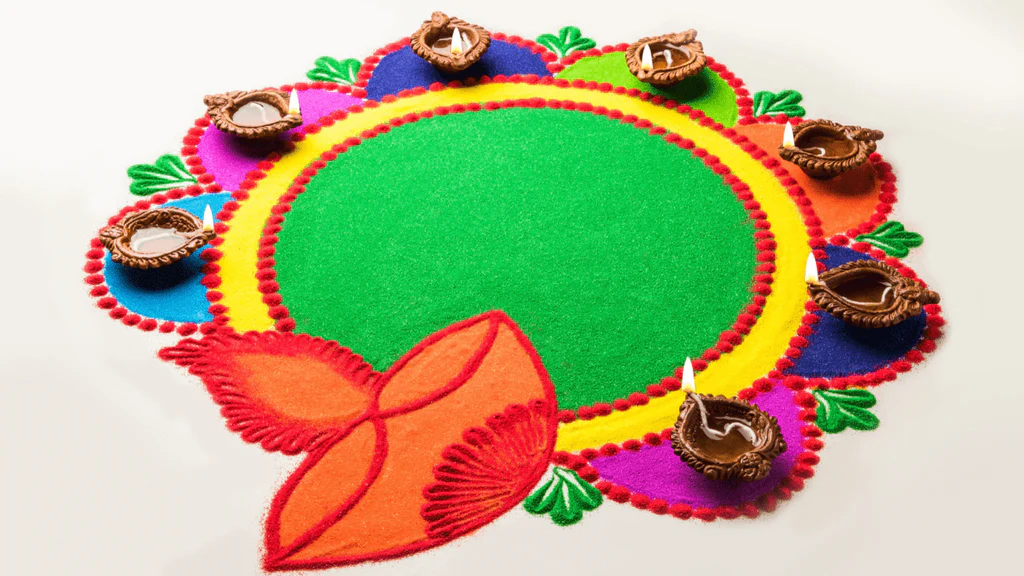

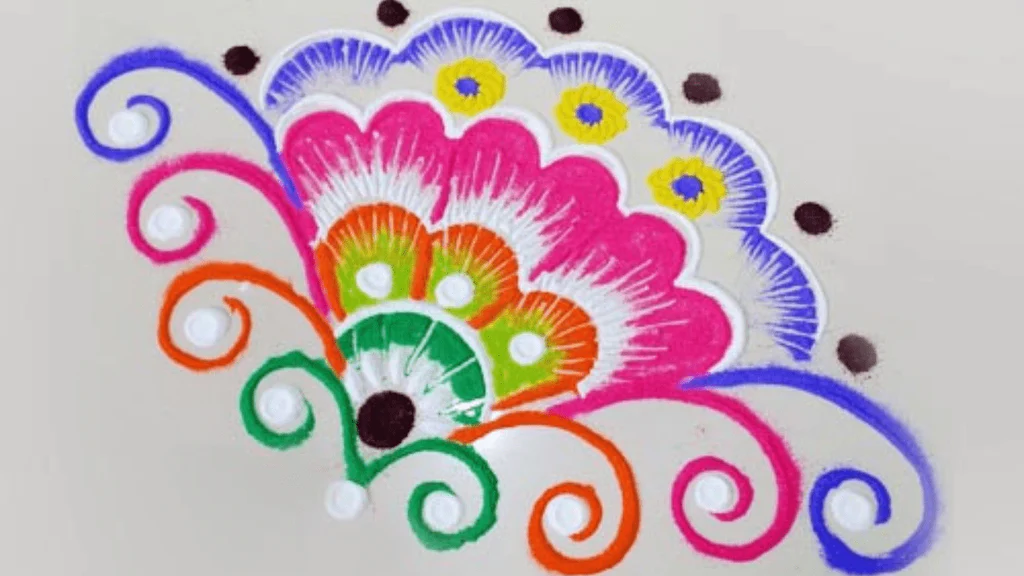


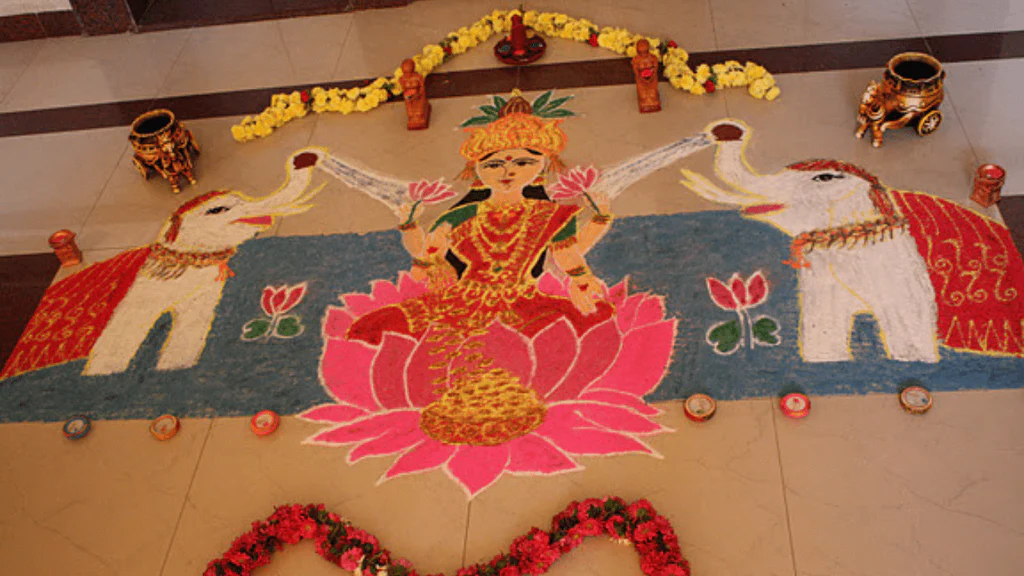

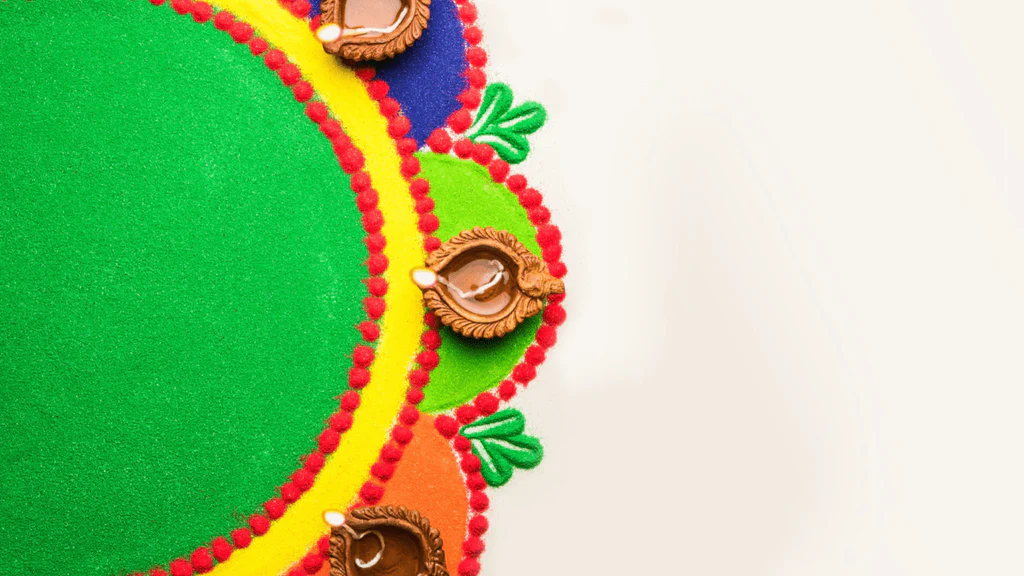

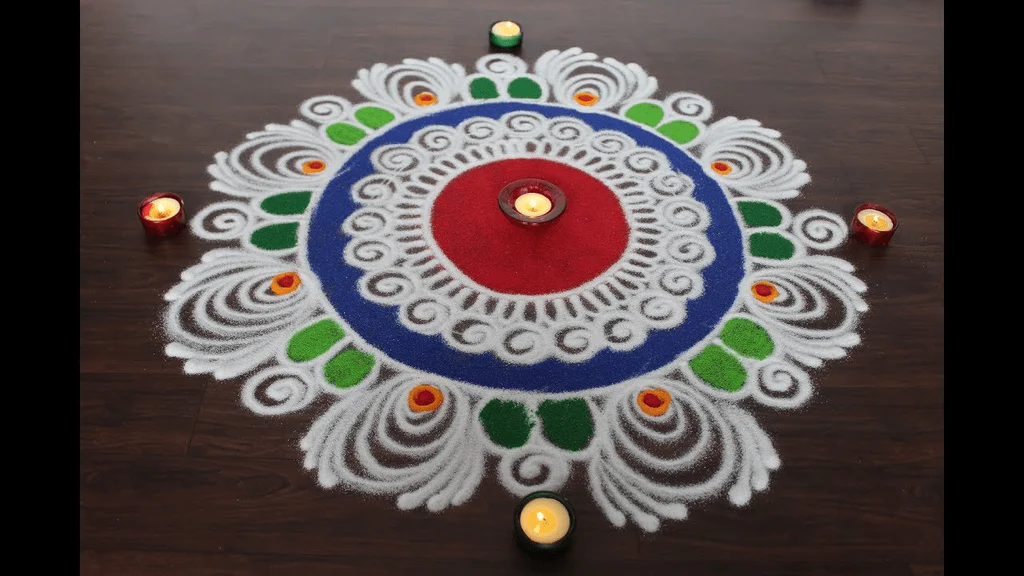





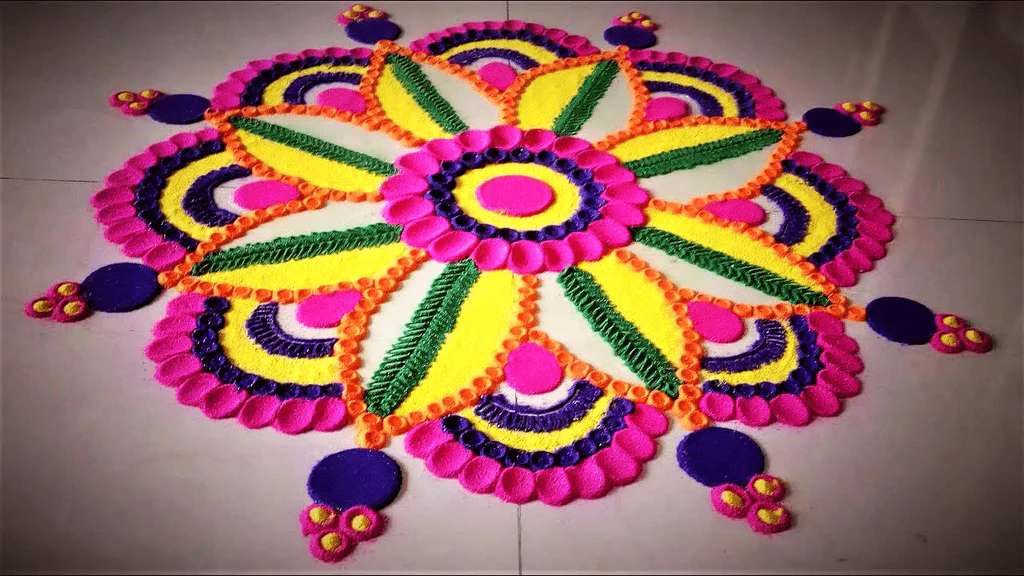

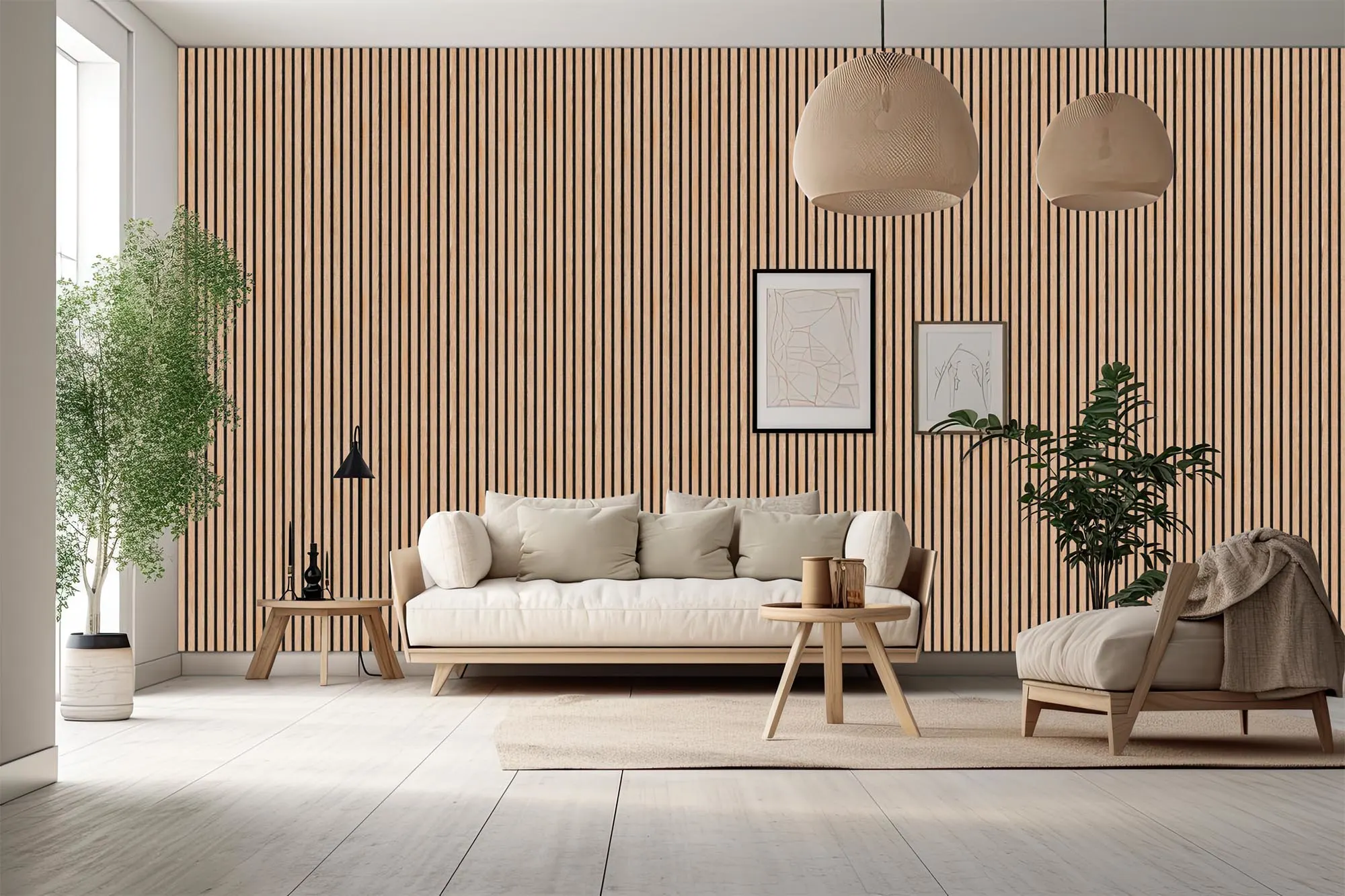




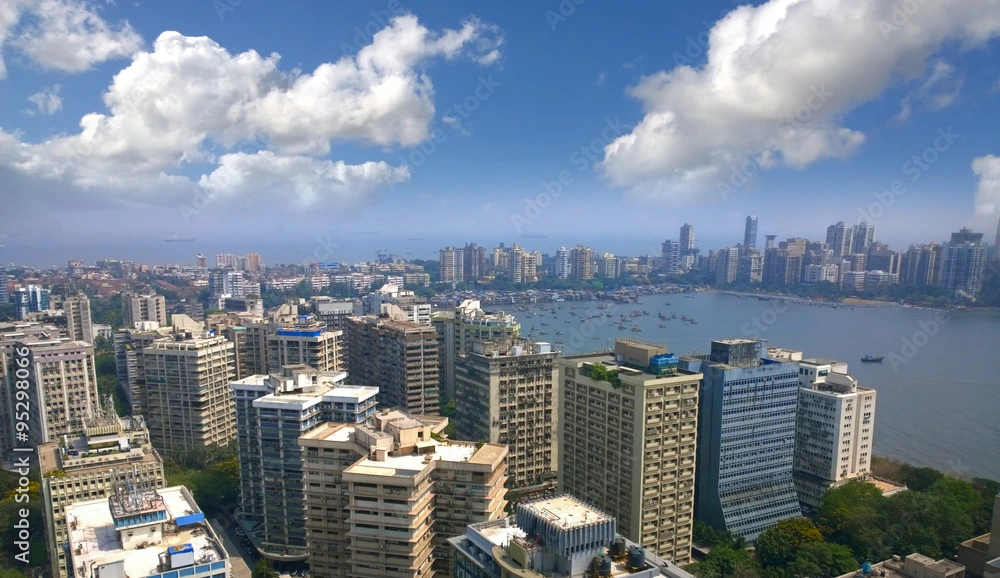
_1764148581.webp)

Ans 1. In India despite the different cultures and customs and different names, Rangoli is common and it brings joy and prosperity. Rangoli has different origins and names in different parts of India.
Ans 2. What are the three types of rangoli? Kolam Alpana. Aripan. Aipan. Jhoti or Chita. Muggu. Kolam.
Ans 3. Rangoli is an ancient Hindu art form from India. Derived from the Sanskrit word 'Rangavalli', it means rows of colours, and is drawn in the homes, courtyards and sometime even on walls, to celebrate auspicious occasions.
Ans 4. Rangloi signifies welcoming Goddess Lakshmi on Diwali. It is believed that making rangoli at the entrance of the house welcomes positive energy and wards off negative energy. Rangoli is also bordered by a lotus design, as a gesture to welcome Goddess Lakshmi.
Ans 5. Rangoli patterns are often made during Diwali - the Hindu festival of lights. However, you can also see them at events like weddings, special occasions, religious celebrations and other Hindu festivals like Pongal, Tihar and Onam. At these times, families will make their own rangoli patterns to display.
Ans 6. Rangoli is an art form, originating in the Indian subcontinent, in which patterns are created on the floor or the ground using materials such as coloured rice, dry flour, coloured sand or flower petals. It is usually made during Diwali or Tihar, Onam, Pongal and other Hindu festivals in the Indian subcontinent.24-Apr-2019